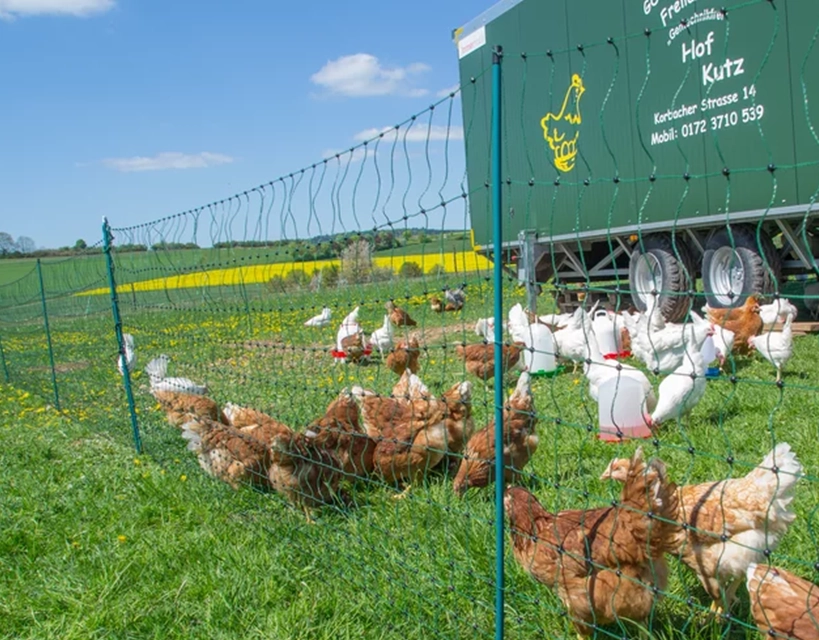Poultry Conductor Buyer's Guide
|
Fence conductors for poultry
|
Poultry Nets: Also known as just chicken nets, these are available in various lengths (25 m - 50 m) and colours (green, orange), depending on the size of the area and personal preference. Poultry nets are flexible and allow easy setup of runs for chickens, ducks, and geese. The height and mesh size are specially designed to prevent adult birds from escaping. However, chicks may still manage to slip through, so securing the lower part of the net is advisable.
Poultry nets are more affordable than traditional electric fences made from posts, insulators, and conductor materials. They are also quick and easy to set up or take down by a single person in minutes, and multiple nets can be easily connected for larger areas.
Most chicken breeds can jump up to 60 cm, so the poultry net should be at least this high. Certain breeds, like Silkies, can jump up to a metre, which is why we offer nets with heights between 105 cm and 112 cm.
Polywire: Polywire is made from a combination of conductive metal wires (stainless steel and/or copper) and non-conductive plastic threads (PE or PP). This makes them durable, high-performing, and very cost-effective. You can use polywire to build a budget-friendly chicken fence or convert an existing fence into an electric one using off-set insulators. Make sure to prevent any large gaps between the wires to prevent breakouts or intruders like foxes. So for a chicken fence, the polywire should be placed at multiple heights to prevent chickens from flying over or squeezing through, and to deter predators like foxes.
- Bottom wire: 10-15 cm (4-6 inches) from the ground to stop predators from digging under.
- Middle wire(s): 30-50 cm (12-20 inches) to block chickens from getting through or over the fence.
- Top wire: 90-100 cm (35-40 inches) to prevent them from jumping over the fence.
Choosing the right insulators for poultry fences
Insulators should match the fence material you're using. There are specific insulators for polywire, and it’s important to consider the type of posts you have (wood, metal, or plastic).
Insulators, made from durable, non-conductive materials, isolate the conductor material from the posts. Plastic insulators are the most commonly used as they are lightweight, weather-resistant, and affordable. Polyethylene or polypropylene are often used due to their durability and resistance to weather.
For poultry fences, ring insulators, W-insulators, and wire clips for plastic posts are ideal. Poultry nets do not require additional insulators.
Additional considerations
Whether you're building a permanent or mobile fence, different quality levels are available. Netting is perfect as a solution as they are inexpensive, quick to install, and easy to roll up again. The higher the material quality, the longer the fence will last. Since the fence material will be exposed to the elements, it must be tough and durable. The higher the quality, the more secure and long-lasting the fence will be.
Whichever material you choose, make sure it has high weather and UV resistance, as well as a sufficient number of conductors (stainless steel and copper).
For ease of installation, we recommend using fence reels for setup.


Our manufacturers of high-quality conductor material:
Gallagher, e.g., for electric polywire and poultry nets
Pulsara, e.g., for affordable electric conductors
|
Select your fence conductor in just 3 steps
Coming Soon If you have any questions or would like personalised advice, we are happy to assist you.
|
